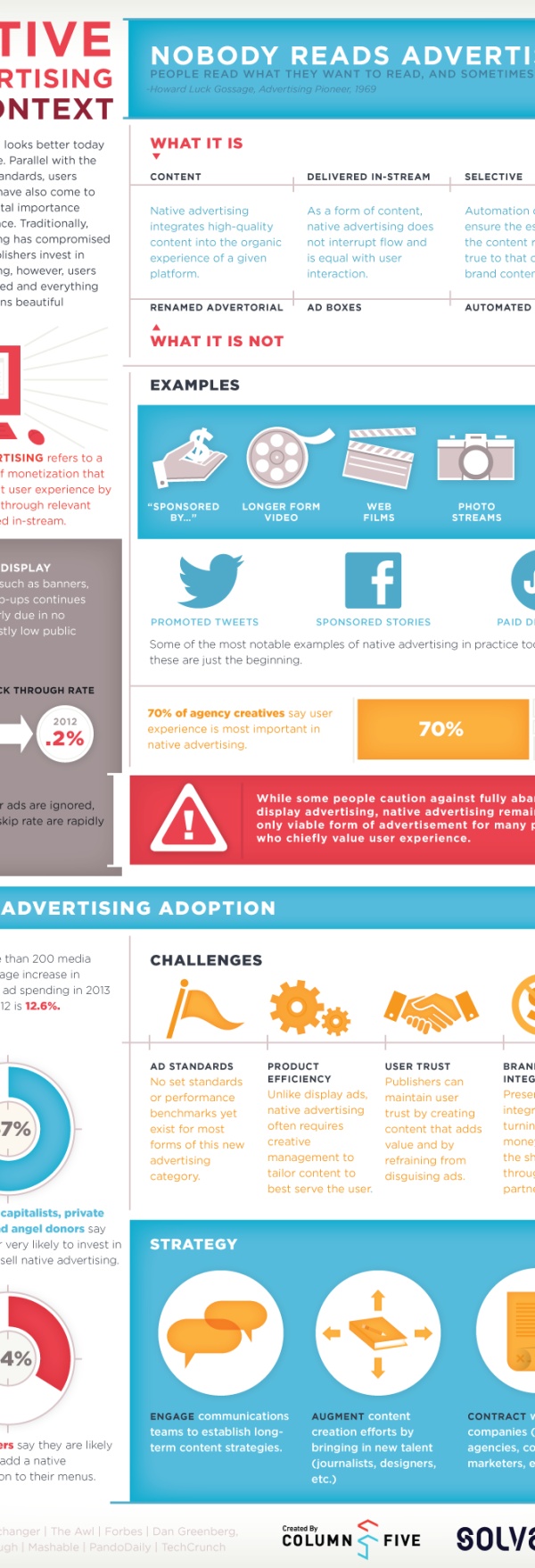“Native advertising refers to a specific mode of monetization that aims to augment user experience by providing value through relevant content delivered in-stream.”
That’s how Solve Media describes the latest buzz word to emerge unchecked from the depths of the marketers’ group mind.

Of course, there is a full menu of definitions to choose from. But none of them make sense to me. Not even this one from Friend of AdPulp and leader of Deep Focus, Ian Schaefer:
Advertising that takes advantage of a platform in the ways consumers are actually using it.
Advertising is not native. Hence, the phrase “Native Advertising” is a contradiction in terms.
Is it a better choice of words than “Content Marketing” or “Brand Storytelling”? No. It’s not. But quality has never really been Adlandia’s thing, has it?
Previously on AdPulp: “Native Advertising” Is Advertising That Fits The Media Vessel Better? #IDK



